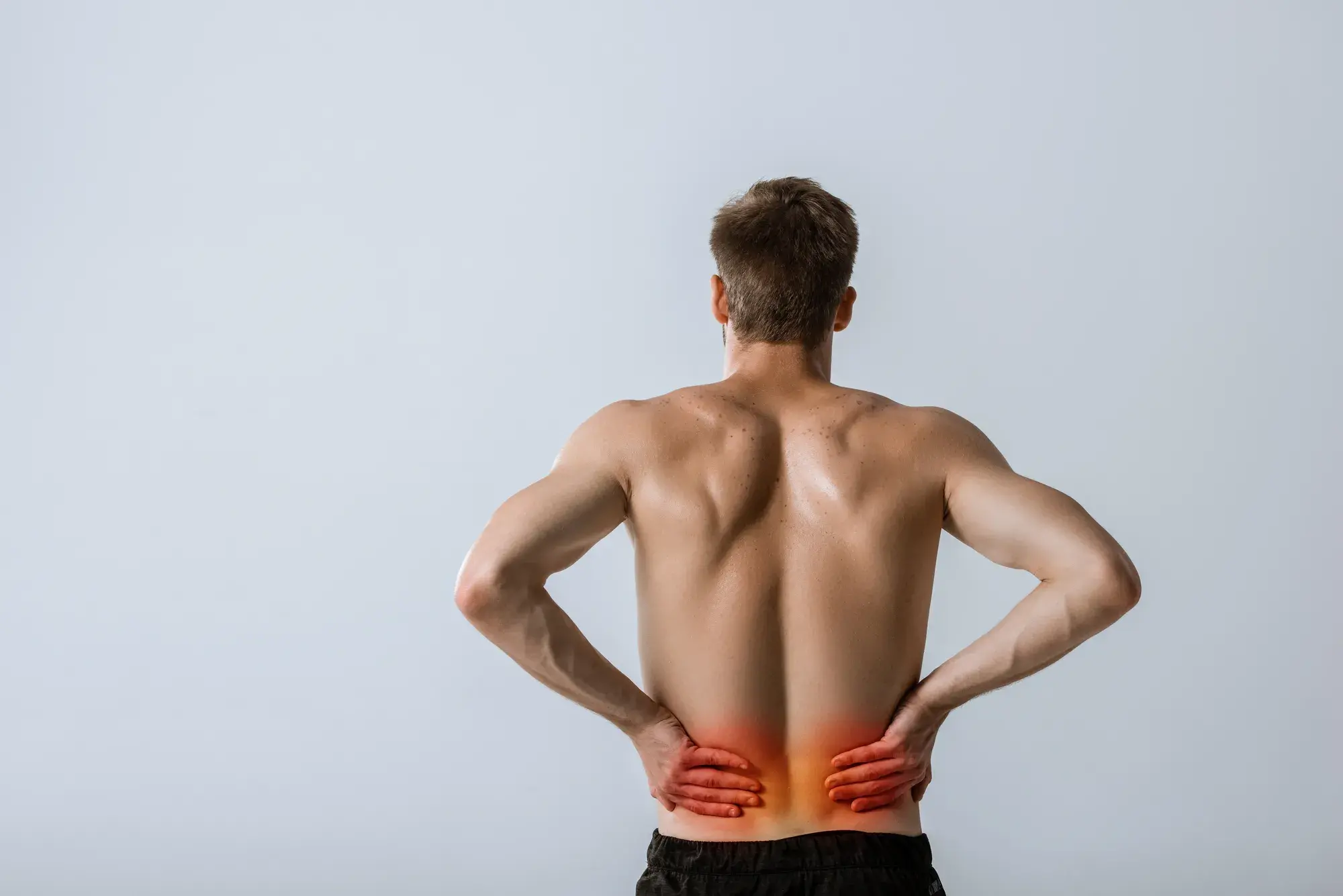Back Pain

How To Tell If Back Pain Is Muscle Or Disc
Read More
November 10, 2022
When it comes to back pain, the solutions aren’t always apparent or suitable for the average person suffering. Unfortunately, while many people do and will suffer from back pain, they will also struggle to determine a possible repair or correction, let alone a solution for the pain. On the other hand, some patients with chronic back pain know precisely why and how the pain occurs, they just can’t do anything about it. Whether patients understand the origin of pain or not, they are all looking for a solution to the pain. Luckily, pain relief is prevalent and there are several options for patients to consider. But for those struggling with the treatment after treatment, injection after injection and the path to surgery, it will be a relief to hear that a next generation of pain management has arrived.
Before we get to the next generation solution for chronic back pain, it’s likely that many will not know or understand the origin of their chronic back pain and going over some of the likely causes could help patients in their assessment and application of treatment. It may be a comfort for patients to know they are not alone. Doctors Bursey et al. conclude that, “[a] high proportion of the public believe LBP [Low Back Pain] to have inevitable negative consequences and hold incorrect beliefs about diagnosis and management options, which is similar to findings from other countries. This presents challenges for clinicians and suggests that considering how to influence beliefs about LBP in the broader community could have value.” However, patients might not realize why learning about the origin of their back pain can be useful. That fact is that learning more about your condition will allow you to have a deeper understanding of what you are experiencing and what you believe will help. Going to a doctor with this information will give you the confidence you need to know you are receiving the best treatment possible.
The doctors continue, “Given the high prevalence of LBP and that many will consult a range of healthcare professionals, future efforts could consider using broad reaching public health campaigns that target patients, policy makers and all relevant health providers with specific content to change commonly held unhelpful beliefs” (Bursey et al. 2021). While these common and unhelpful beliefs are for the patient to determine with their doctor, the presence of misinformation surrounding back pain is real.
Patients experiencing the condition should always do their research and then bring their findings to a medical professional for diagnosis. Whether the patient is correct or not in their personal pre-diagnosis, they can take pride in the fact that they took initiative in understanding their condition and are working toward a lasting solution for treatment.
Some of the most common causes for back pain might not be readily apparent to patients and may take a proper diagnosis from a medical professional before starting the recommended treatment. As mentioned previously, most people will experience back pain in their lives and it will likely become an issue for which most would seek medical attention. The types of patients who seek medical attention for back pain will often be divided into subsets before doctors recommend them for a particular treatment. So, like medical professionals, when considering the causes of back pain, we must also consider these various subsets of patients who are categorized by the conditions they face that would be considered risk factors.
The first, most prominent qualifier for the cause of back pain is age. Back pain is most common with patients who are over the age of thirty. This is not to say that patients under thirty cannot or will not experience back pain, but it is more likely that a patient who is experiencing back pain will be over the age of thirty. Unfortunately, age is a risk factor for most conditions including back pain and this is due to the wearing down of disks that sit along the vertebrae and disks of the human spine. Over time, these soft and flexible disks that can absorb the impact and stretching required from physical activity, become more brittle and unable to support the weight placed upon the vertebrae of the spine, which is compounded in complexity with obesity and metabolic conditions like insulin resistance and type 2 diabetes.
The issue of accomplishing physical tasks is further exacerbated by the weight of an individual. The extra and unnecessary weight of an individual will strongly contribute to the pain experienced in the lower back. Because we ask our spine to handle hundreds of tasks which can often be strenuous every day, adding extra weight to the spine would further increase the pain experienced by patients with back pain. Weight is often a result of an individual’s occupation or lifestyle and underlying health conditions like hormone balance and metabolic functions.
Unfortunately, those who live or work in an environment that is more sedentary and requires the patient to sit for several hours at a time have a much higher chance of being overweight and experiencing greater back pain. Patients who live or work in such environments may be surprised to learn that their environment can cause back pain because it does not require them to move around or do any strenuous exercise or activities. Contributing factors for back pain, while surprising, are no less serious and vary from the aforementioned qualifiers to osteoarthritis and even depression or anxiety.
With these conditions and qualifiers in mind as causes for back pain, we must also consider a condition that is directly connected to the nerves along the lower back, sciatica. Sciatica, being a condition that results from the compression or pinching of the sciatic nerve, may also be directly tied to the disks along the vertebrae that compress the nerve. So, if the nerve is compressed by the disks, the disks along the spine are also wearing out over time, and a patient suffers from any of the former qualifiers, one can begin to understand that back pain is a condition that is complex and multifaceted.
At the outset of the search for treatment, patients who understand that their back pain is likely a result of more than one contributing factor. Because of the enumeration of conditions that contribute to back pain, patients will often feel discouraged and assume that there is no one-size-fits-all solution to their back pain. While most patients may know of temporary pain-relievers, all would rather have effective, safe, and lasting treatment without risking surgery, habit-forming drugs, or have routine steroid injections that are now known to make conditions worse over time.
When it comes to lasting and effective relief from back pain, Neuralgesia stands at the forefront of the next generation of back pain treatment. Neuralgesia is a proprietary treatment program offered exclusively by Relatyv. Neuralgesia is a combination of high pulse electrical stimulation and specialized hydration therapy that work together to produce an enhanced pain relief effect that can endure for several months after a patient completes a course of treatment.
Patients looking for an effective and lasting pain relief that does not require medication, implants or surgeries, Neuralgesia treatment therapies may be the ideal treatment program. Neuralgesia typically lasts for one hour, twice a week. With the combination of high pulse electrical stimulation, which creates a sustained depolarization effect on pain neurons and produces an ongoing pain relief effect, and hydration therapy of a specialized blend of vitamins, minerals, and other nutritional components, patients will experience the most targeted and effective pain treatment in a short amount of time that may endure for months and months.
Relatyv understands that with a balanced and effective nutritional vitamin/mineral treatment to restore general full-body hydration and high pulse electrical stimulation that heals damaged nerves, Neuralgesia is really the next generation of pain management, and the safest treatment option for chronic pain patients. Neuralgesia is next generation pain management that relieves pain, restores health, and magnifies quality of life while operating as a non-pharmaceutical, non-surgical, non-invasive, and non-chiropractic pain management treatment program. Join us at Relatyv to experience the relief from pain and get back to a quality of life you deserve. At Relatyv, our mission is to help patients relieve pain, restore health, and magnify quality of life without medications, surgeries, or invasive procedures.
Call and visit Relatyv today for a free phone consultation and view several patient testimonials that attest to the efficacy of these sessions:

First thought, first choice, and first step in the journey of chronic pain management.
About the Author
Will is a healthcare executive, innovator, entrepreneur, inventor, and writer with a wide range of experience in the medical field. Will has multiple degrees in a wide range of subjects that give depth to his capability as an entrepreneur and capacity to operate as an innovative healthcare executive.
Share on Social Media



You can see how this popup was set up in our step-by-step guide: https://wppopupmaker.com/guides/auto-opening-announcement-popups/
You can see how this popup was set up in our step-by-step guide: https://wppopupmaker.com/guides/auto-opening-announcement-popups/
Neurofunctional Pain Management Overview
Symptoms
Conditions Treated
Treatments
Articles by Category
Locations
Colorado
Wisconsin
Georgia
Hiram
Lawrenceville
Marietta
Powder Springs
Texas
Waco
Victoria
Illinois
Buffalo Grove
New Lenox
St. Charles
Arizona
Tucson
Waddell
Arlington
Avondale
Buckeye
Superior
Mesa
Palo Verde
Morristown
Tempe
Chandler
Anthem
Eloy
Florence
Fort McDowell
Phoenix
El Mirage
Coolidge
Gilbert
Arizona City
Casa Grande
Casa Blanca
Aguila
Sacaton
Apache Junction
Kearny
Stanfield
Goodyear
Litchfield Park
Alabama
Arkansas
California
Florida
Idaho
Indiana
Iowa
Kansas
Louisiana
Maryland
Michigan
Rhode Island
Minnesota
Mississippi
Nevada
New Jersey
New Mexico
North Carolina
Ohio
Pennsylvania
South Dakota
Tennessee
Utah
Virginia
Washington


